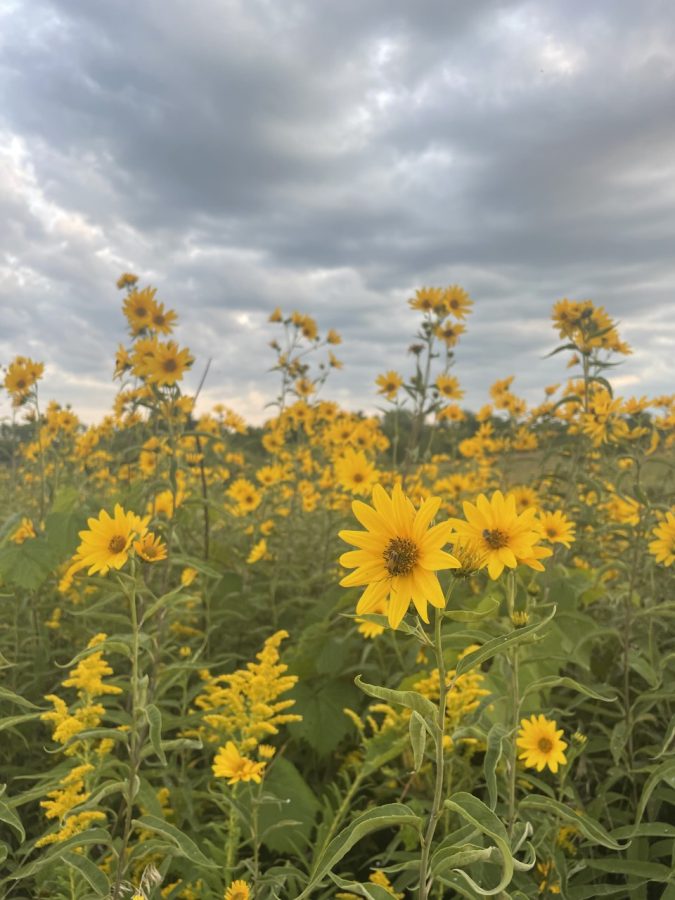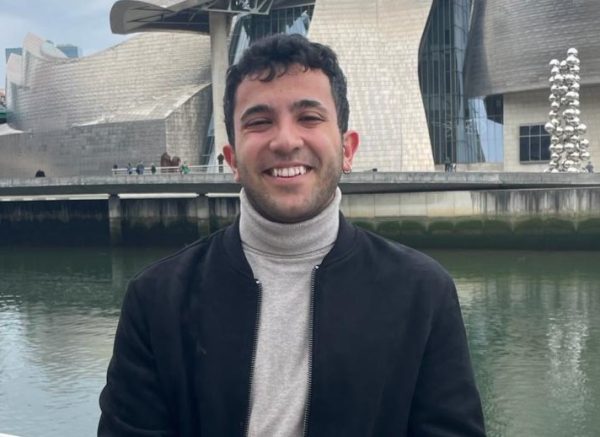Center of Prairie Studies continues to grow
Students foraged for “wild edibles” on a trip to CERA.
October 31, 2022
Just 12 miles from campus, the Conard Environmental Research Area (CERA) cuts through the cornfields and provides a robust view into the environmental diversity of Iowa that is often obscured by industrial farms and concrete expanses.
CERA is a 385-acre field station that stretches across a diversity of landscapes. Visitors can explore and study tallgrass prairie, savanna, wetland and oak forest ecosystems. Members of the College community have opportunities to learn at CERA through formal class opportunities, weekend ventures and self-directed exploration. With its ecological diversity and abundant opportunities for hands-on learning and activities, CERA is an ideal venue for fostering connections between individuals and the Iowa landscape.
“CERA has tremendous potential to be a host site for lots of different events moving forward: recreational, educational and cultural,” said CERA Manager Emily Klein. Klein is also an outreach coordinator for the Center for Prairie Studies (CPS), which is closely connected to CERA.
“Our mission is to promote our Midwest region as a rich site for teaching, learning, advocacy and wellbeing,” said education Professor Cori Jakubiak, the director of prairie studies. CPS seeks to develop and host programming that helps people learn about and feel more connected to the Iowa region, said Jakubiak.
During the fall semester, students, faculty and staff have had the opportunity to attend two key campus events: a kayaking trip on Perry Pond on Sept. 10 and a “wild edibles” foraging event on Oct. 8.
The foraging event was a reprise of a foraging trip held in the spring of 2022, when naturalist and foraging expert Chelsea Ewen Rowcliffe gave a presentation on foraging practices before leading students in a hands-on hike and a search for seasonal greens. The group trekked along the forest paths to collect wild garlic and dandelion greens for a verdant springtime frittata, served alongside a birch-bark spritz.
Foraging targets are innately dictated by seasonality. The popularity of the spring foraging trip inspired the planning of another event in October. This time, students, faculty and staff were led by Rowcliffe in identifying and collecting mushrooms, nuts and acorns during a morning and afternoon session. Given that the waiting list for the activities stretched to 83 people, CPS looks forward to coordinating more events at CERA and on campus.
In November, the Center will welcome Joe Otto, an environmental historian, Neil Hamilton, author of “The Land Remains,” a book and memoir focused on environmental issues in the Midwest, to give talks open to the College and town community. Fred Lively, an artist, will also visit and teach two workshops in crafting wooden pinch pots.
Grinnell College acquired the CERA area as farmland in 1968, and by 1988, it had restored pastures and crop areas to a robust spread of tallgrass prairie. CERA is frequented by participants in Grinnell science classes, outdoor education activities and is open to the public for hiking, birdwatching and artistic endeavors.
Maintenance of the terrain and its ecological development are constant works in progress. Klein noted that she was glad students on the kayaking trip had the chance to see the herd of goats that she had commissioned to munch away brush and overgrowth, stressing the importance of the experiential learning that the CERA space fosters.
Events at CERA are multi-pronged opportunities. For some, visiting the terrain might help them cultivate a new skill, like kayaking. For others, participating in a hike, aquatic adventure or concert on the prairie can highlight a new and sometimes rare dimension of Iowa’s original ecosystems. “There is a real value added to our college to have a remote campus with such natural beauty and potential for learning,” said Klein.



















































